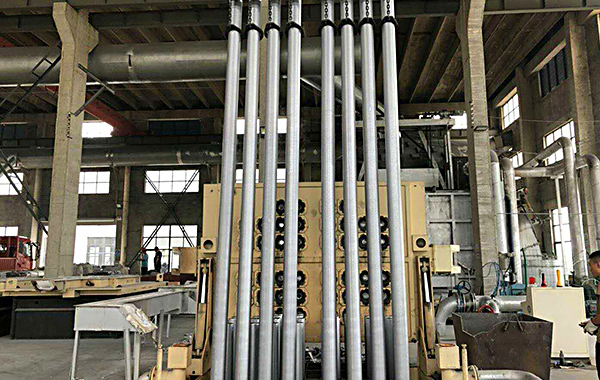 | 24-hour consultation hotline 13815991011 |
Company Name: Taixing Pengsheng Forging Co., Ltd.
Contact: Zhang Peng (General Manager)
Contact: 13815991011
Tel: 0523-87433837
E-mail: 878711040@qq.com
Fax: 0523-87433080
Website: en.txpsdz.com
Address: Xinhua Group, Zhanggong Village, Hongqiao Town, Taizhou City
The test is divided into inspection of the appearance quality and inspection of the quality. The inspection of the appearance quality is generally a non-destructive inspection, which can be inspected by the naked eye or a low magnification magnifying glass, using a flaw detection method. For the inspection of internal quality, due to the requirements of its inspection content, some must use destructive testing, that is, the commonly used anatomical tests, such as low-spectrum test, fracture test, high-fold tissue test, chemical composition analysis and mechanical property test. Some can also use non-destructive testing methods, and in order to more accurately evaluate the quality of forgings, destructive testing methods and non-destructive testing methods should be combined with each other. In order to analyze the quality of forgings from a deeper level, the mechanistic research work should be assisted by transmissive or scanning electron microscopes and electron probes.

Generally, the internal quality inspection method of forgings can be summarized as: macroscopic inspection method, microstructure inspection method, mechanical property test, chemical composition analysis method and non-destructive testing method.
Macroscopic tissue inspection is a test that uses a visual or low magnification magnifying glass (generally multiples below 30×) to observe and analyze the low-fold tissue characteristics of forging. Common methods for macroscopic inspection of forgings are low-corrosion methods (including thermal erosion, cold etching, and electrolytic corrosion), fracture test, and sulfur printing.
Low-corrosion method is used to inspect cracks, folds, shrinkage holes, pore segregation, white spots, looseness, and non-deformation of structural steel, stainless steel, high-temperature alloy, aluminum and aluminum alloy, magnesium and magnesium alloy, copper alloy, titanium alloy and other materials. Metal inclusions, segregation accumulation, distribution patterns of streamlines, grain size and distribution, etc. The specifications for etchants and etches used for different materials exhibiting low-magnification are different.
The fracture test method is used to inspect the defects such as white spots, layered and internal cracks of structural steel and stainless steel (except austenitic type), inspect the graphite carbon of the spring steel forgings, and the overheating and overheating of the above steel grades, etc. Alloys such as magnesium and copper are used to check whether the grains are fine and uniform, and whether there are defects such as oxide film and oxide inclusions.
The sulphur printing method is mainly applied to large forgings of certain structural steels to check whether the distribution of sulfur is uniform and the amount of sulfur.
Except for structural steel and stainless steel forgings, the test pieces for low-spectrum inspection are not subjected to final heat treatment, and the forgings of other materials are generally subjected to low-inspection after final heat treatment.
The fracture specimens are generally subjected to a specified heat treatment.
The microscopic examination rule uses optical microscopy to examine the microstructure of various material grade forgings. The items to be inspected generally have an intrinsic grain size, or a grain size at a specified temperature, ie, actual grain size, non-metallic inclusions, microstructure such as decarburization layer, eutectic carbide non-uniformity, overheating, Over-burned tissue and other required microstructures, etc.
13815991011
| No public
|
|
|
Company Name: Taixing Pengsheng Forging Co., Ltd.
Address: Xinhua Group, Zhanggong Village, Hongqiao Town, Taizhou City
Fax: 0523-87433080
Mobile: 13815910111
E-mail: 878711040@qq.com